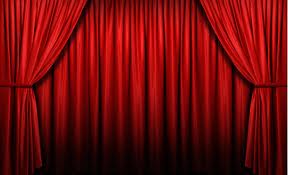Blog |
|
Theatre is dying along with funding for the arts in America…
…so what are American theatre artists to do? According to freelance theatre director Dan Wilson, “Old is out - new is in. We have to come up with a new system. We have to crush the way it was done and rebuild it. We have to look for new models. We have to listen to new voices. We have to think in new ways. We can't let theatre continue to thrash about on the gurney - we need to let it quietly pass away - help it even - and give it a funeral. And then we need to start fresh with a new theatre for a new century.” Dan goes on to say “If I had all of the power for a few brief moments in this American Theatre world, I would re-name, re-brand, re-envision, re-introduce, re-invite, and renew our commitment to audiences - the people that we do this for. And I would create a popular theatre for the masses. Why aren't they a part of the same brand? It works for Starbucks, it works for McDonald's, Home Depot, Banana Republic, The Disney Store... so WHY NOT our theatres too? Why can I get a membership at 24 hour fitness and travel the country as a Sales Rep for my computer consulting firm and work out in every 24 fitness gym location in the country with my member card but I can't go and enjoy the benefits of being a member in the theatre? Why don't we build brands in the theatre?” Swallowed by the clown tongue I flew to Montreal last week to visit the home base for Cirque du Soleil for a costume fitting and head scanning. I am playing the role of Elvis’ mother in their new multi-million dollar show about Elvis scheduled to open in 2010 in Las Vegas. In my twisted mind, I imagined that their headquarters would be a building shaped like a huge clown head with the clown’s tongue acting as a draw-bridge welcoming it’s visitors into it’s crazy clown head. Instead, I found a huge corporate office building with floor after floor of creative space for artists to do their best work. Once I received my security badge, I was able to roam the building freely, although often accompanied by a guide so I would not get lost in the massive concrete structure. I was ushered to my first costume fitting where I met with the designer and his assistants, all of whom spoke only Italian and French. For hours, they fused over every single stitch of fabric, making sure that I was fitted perfectly with no room for imperfections. Measurements are very important to them, as each and every costume piece I wear will be custom made to fit my body, including my wigs and shoes. At one point, I think they spent a half an hour discussing a sleeve of one of my 1950 period dresses! I found this kind of meticulous behavior to be both exhausting and refreshing. After I was fitted, I was given a tour of the facility by the director of the show, Vincent Paterson, who glowed like an expectant father awaiting the birth of his eagerly anticipated child. He has after all, been creating the show for three years and it is finally, finally, coming to fruition! He is in the period of production they call the “creation” where everything he has talked to the designers and producers about for three years is finally being built from scratch and implemented. He showed me the room where the acrobats create their work, and the studios where he and his choreographer will create their dance numbers for the show. There was an entire floor for costumes, and even a floor for hats and other accessories and an additional one just for shoes. I have worked at some of the best regional theatres in the country, but never before have a seen a facility such as this. It’s sole purpose is to house space for artists to create, and to provide them with whatever they need to achieve artistic excellence. It made me think-why don’t we have a facility such as this in the U.S.A.? Cirque du Soleil has figured it out Somehow Cirque has managed to make performing arts a multi-million dollar business without any government funding. Besides putting out a great product, they also manage to make lots of money for which to continue creating this product over and over again, flawlessly. They seem to employ some of the best artists in the world, including directors, choreographers, coaches, composers, and performing artists. How do they do it? Apparently, one of their goals early on was to create a household name for themselves that would be has American as Coca-Cola or Disney. This goal I believe is one of the keys to their success, (along with the excellent product and genius employees). I am wondering if American theatre should look to Cirque as a role model for theatre in America and if so, what would it require to transform itself? How could you make yourself or your company a household name like Coca-Cola or McDonald’s? It is food for thought if nothing else… Written by Che’Rae Adams for NOHOARTSDISTRICT.COM May 2009
1 Comment
|
by Che'Rae AdamsProducing Artistic Director of the LAWC Archives
July 2015
Categories |


 RSS Feed
RSS Feed